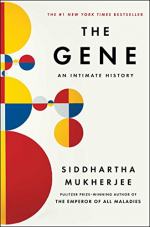|
This section contains 574 words (approx. 2 pages at 400 words per page) |

|
Summary
In the early 1920s, a bacteriologist named Frederick Griffith discovered a phenomenon called transformation. As opposed to genes always traveling vertically from parent to child, he discovered that in rare cases they can also travel horizontally between organisms. This process of transformation almost never occurs in mammals but it occurs in bacteria. Griffith's conclusions are summarized by Mukherjee as follows: "Genes could [...] be transmitted between two organisms without any form of reproduction. They were autonomous units—material units—that carried information. Messages were not whispered between cells via ethereal pangenes or gemmules. Hereditary messages were transmitted through a molecule, that molecule could exist in a chemical form outside a call, and it was capable of carrying information from cell to cell, from organism to organism, and from parents to children (113).
In the 1920s, Hermann Muller was studying fly genetics and discovered that...
(read more from the Transformation (Part Two) Summary)
|
This section contains 574 words (approx. 2 pages at 400 words per page) |

|




